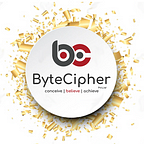What is Agile Project Management Software?
Successful completion of a project depends on various factors, and things can also go wrong when trying to execute it. You can outspend your budget. Your team can fail to collaborate and communicate effectively, leaving gaps along the way. You can fail to know where the project stands, leading to riffs and even mistrust with your client. And you can also fail to meet your deadline, which can cause trouble and complications for all parties involved.
Since so many things can go wrong, it’s best to have a solution that can improve communication and tracking, streamline workflow, and more to reduce the risk of failure. For many nowadays, that solution is Agile project management software. With it, you can have all the tools you need to implement the various methodologies that make up the Agile programming approach. And is very useful for software development companies.
What is Agile Programming?
When someone wants to create or develop new software, they might opt for the Agile programming method. In keeping true to its name, Agile employs the iterative approach, which has you repeat a series of steps where you tweak the product and improve it as each cycle passes.
Projects are usually divided into sub-projects. Each sub-project is completed individually in work sessions that are sometimes called sprints. If something’s missing, it’s added to the process to make the product more complete. And once the product reaches the point of perfection, it’s finally finished.
Here are some of the principles that make up the “manifesto” for agile software development:
- Deliver the software continuously to satisfy the customer.
- Changes to the software are always welcome, no matter what stage of development you’re in.
- Constant communication and coordination between team members and customers are a must.
- Open communication is encouraged to ignite new ideas.
- Solid design and technical excellence are prioritized.
- The simpler, the better in terms of workload.
- Motivated and trustworthy individuals make up the core of each project.
- The number one measure of progress is working software.
- Scheduled timelines must be adhered to by all departments.
- A team that self-organizes often produces the best designs and architectures.
- A team should continuously look to improve its efficiency and adapt when necessary.
What is Project Management?
While project management’s definition tends to vary depending on where you look, here’s what it breaks down to Taking a project and guiding it from the beginning to the end of its lifecycle. What defines the project management lifecycle? It starts as soon as the project begins and ends when the project is finished or terminated.
Project management is used to complete ventures while adhering to specific restraints for budget, time, and quality. Without it, transparency, communication, productivity, and clarity can lack, which can sabotage a team’s overall goal and lead to eventual customer dissatisfaction.
Benefits of Agile Programming
According to a 2018 study by the Project Management Institute, 71 percent of organizations have turned to Agile programming for their needs. Why are so many companies using Agile?
Here are some of the benefits of using Agile programming:
- Greater customer satisfaction and retention since they are constantly involved in the decision-making process versus only participating in the planning phase.
- Reduced go-to-market time, which can allow the customer to release its product before competitors.
- Improved product quality since testing is emphasized, and clients can adjust to market realities and ask for changes on the fly.
- Managers enjoy greater control over the project thanks to feedback integration, quality control, and transparency features.
- Due to small sprints and continuous delivery, Agile methodology can help managers adjust as needed to reduce the risk of project failure.
- Projects can run smoothly via increased visibility which makes it easier to predict risks and formulate mitigation plans.
- Team morale is often higher with Agile programming, as they’re allowed more autonomy and can self-manage and self-organize.
- The use of the iterative approach allows Agile teams to improve projects continuously. In theory, every sprint should be better than the last, and repeat mistakes should be avoided.
- Agile programming is genuinely “agile” and flexible because it divides each project into small sprints that make it much easier to implement changes with little notice.
Examples of Agile Project Management Tools
Although there is no shortage of Agile project management tools on the market for businesses of every size, here’s a short list to get you started in your search:
- ProofHub — Used by over 85,000 businesses across the globe.
- Smartsheet — Try it for free to see how it offers unlimited team creation and promotes open collaboration.
- Wrike — Simple to set up and also has a free trial.
- Active Collab — Offers easy sharing, time and expense tracking, brainstorming, and more.
